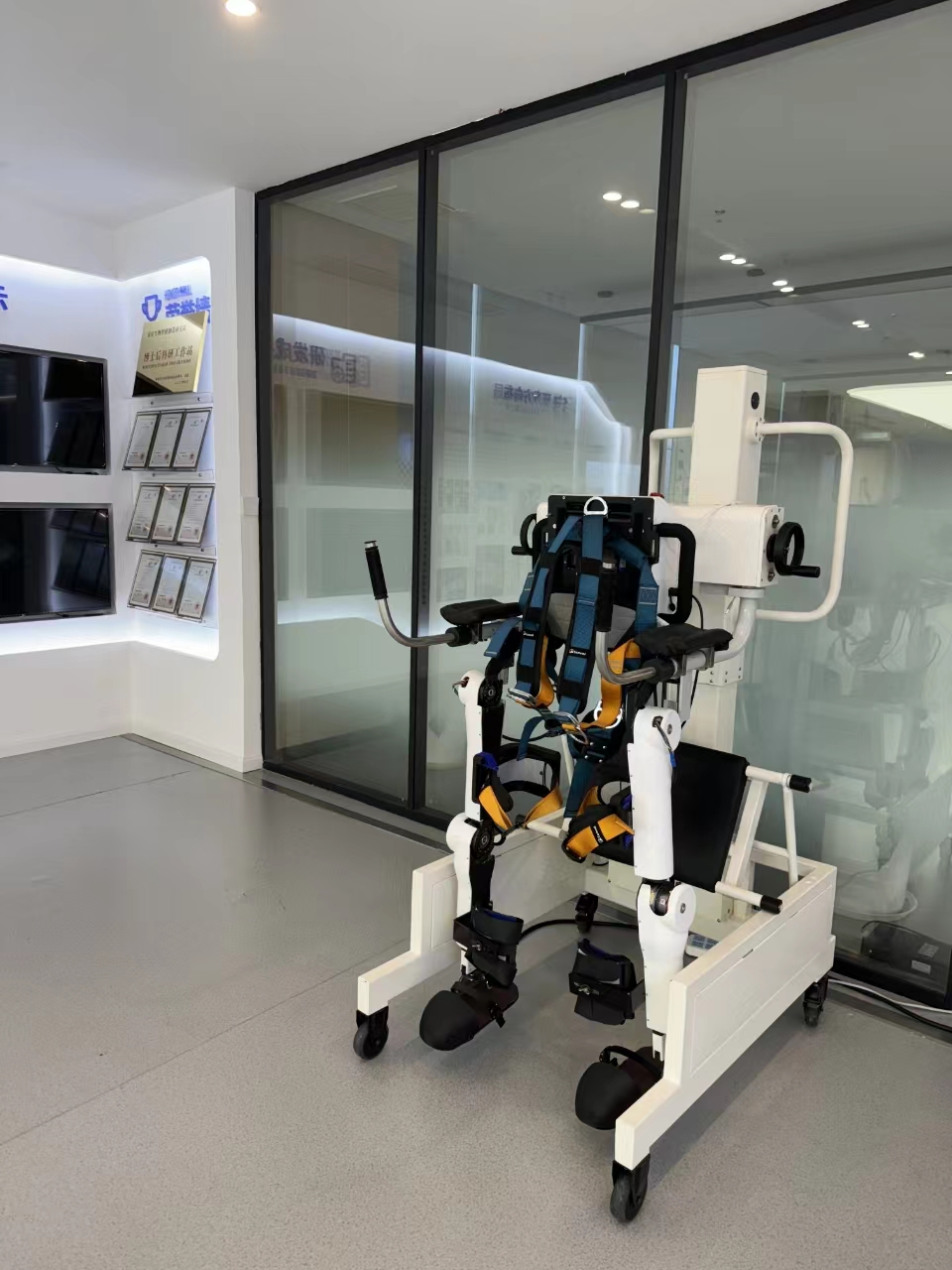 Bridging News
Bridging News
Two Exoskeleton Robots Complete Testing in Chongqing, Market Launch Soon
Chongqing - Recently, two exoskeleton robots underwent technical and functional testing in Chongqing's Liangjiang New Area and are expected to hit the market soon.
The lower limb exoskeleton rehabilitation robot from Chongqing Institute of Bio-Intelligent Manufacturing (CIBIM) and the knee joint exoskeleton wearable robot from Beijing University of Technology, Chongqing Research Institute (CRI) have both passed their final tests.
The CIBIM robot is expected to be available for small-scale production by the end of the year, while the CRI robot, having undergone functional verification, now offers small-scale customized solutions.
The lower limb exoskeleton detects electrical signals from specific muscles and processes them using algorithms. It is mainly designed to treat neural damage and help individuals with functional impairments in their daily lives.

The lower limb exoskeleton rehabilitation robot. (Photo/Liangjiang Collaborative Innovation Zone)
Zuo Taoqiang, the project leader for the lower limb exoskeleton, stated that CIBIM will continue to increase its research investment, including personnel and funding, and will remain committed to advancing technology in biomedical materials and medical intelligent equipment.
The knee joint exoskeleton is lightweight and significantly reduces the wearer's physical exertion. It is primarily aimed at the smart elderly care sector, focusing on enhancing the quality of life for elderly people in community care settings by providing comprehensive movement support.
As research progresses, the robot will also expand into fields such as military, firefighting, and medical rehabilitation, demonstrating a broad range of potential applications.

The knee joint exoskeleton wearable robot. (Photo/Beijing University of Technology Chongqing Research Institute)
Robotic Exoskeletons are intelligent mechanical structures worn to enhance physical functions and fitness. When combined with brain-computer interface (BCI), their potential is amplified.
BCI differs from traditional interaction methods such as controllers or gestures. Through both implanted and non-implanted methods, they enable direct interaction with the external, providing a more immersive experience by achieving "what you see is what you get" through brainwave signals.
For example, Elon Musk's Neuralink uses implanted BCI to assist paralyzed patients control devices like smartphones or computers with their minds.
By combining AI algorithms with BCI and exoskeleton robots, neural signals are used to control movements. This allows users to control the exoskeleton with their thoughts, aiding in physically rehabilitating paralyzed areas or complex motions. The commercialization of exoskeletons in Chongqing Liangjiang New Area highlights the market potential for BCI.
 Related Stories
Related Stories